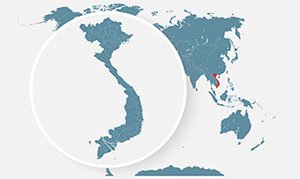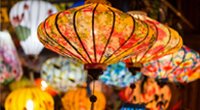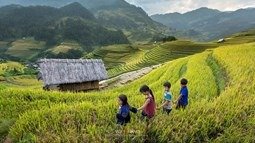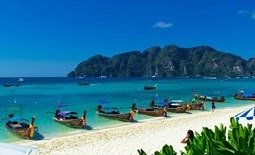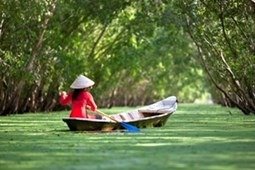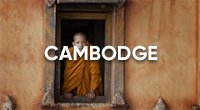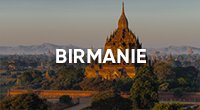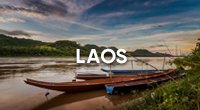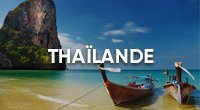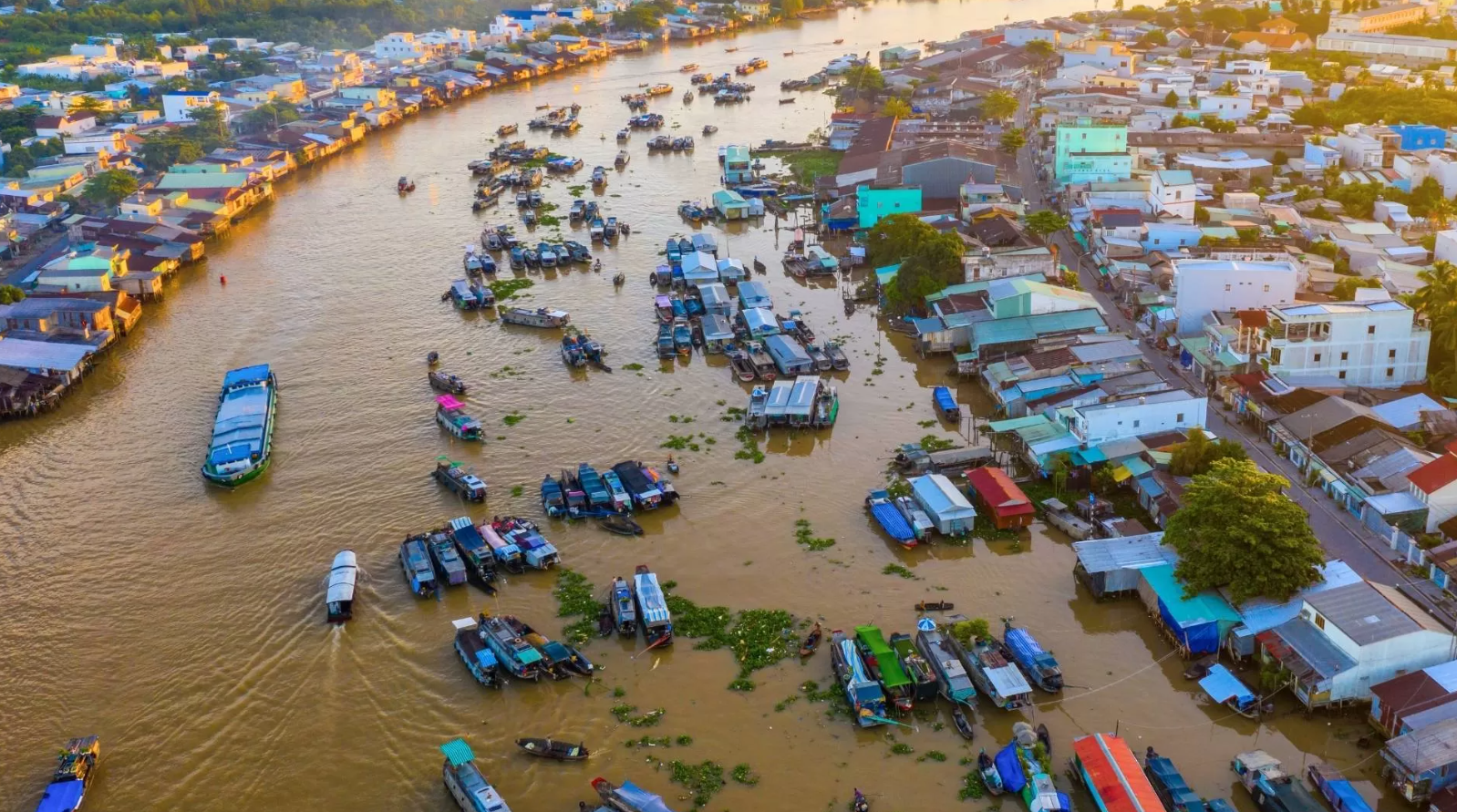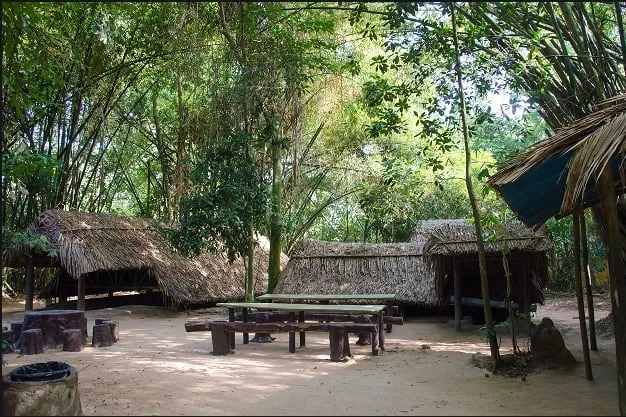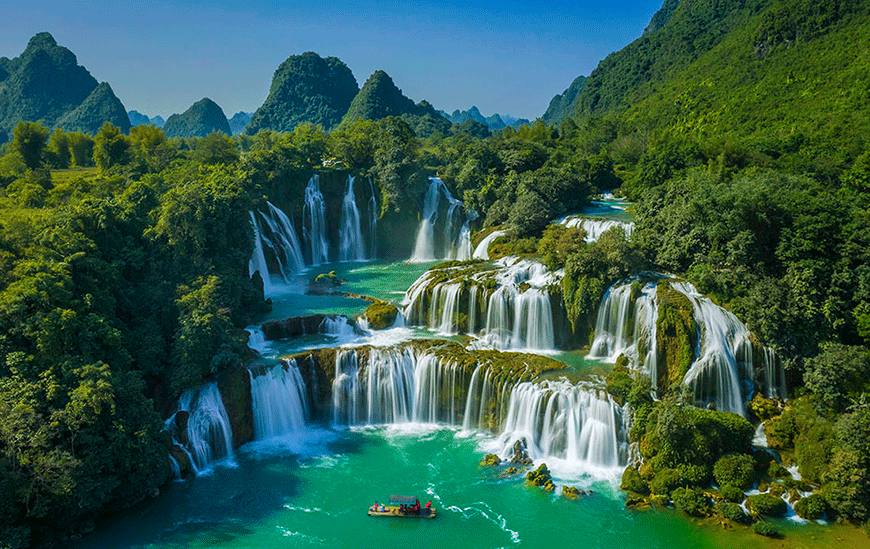Contents
Toggle1. Where Exactly Is the Mekong Delta Located?
The Mekong Delta is a vast and vibrant region situated in the southernmost part of Vietnam, where the mighty Mekong River fans out into an intricate web of rivers, canals, and streams before emptying into the East Sea (also known as the South China Sea) and the Gulf of Thailand. Geographically, the Delta begins near the Cambodian border and stretches all the way down to Vietnam’s southern coastline, encompassing over a dozen provinces and covering approximately 40,000 square kilometers.
Conveniently located just a short journey from Ho Chi Minh City, the Mekong Delta is highly accessible for travelers — with many towns and rural areas reachable in as little as two to three hours by car or bus. Despite its proximity to the bustling urban sprawl of Vietnam’s largest city, the Delta offers a dramatic shift in pace, immersing visitors in a serene landscape of verdant fields, traditional villages, and slow-moving waterways.
Thanks to the nutrient-rich sediments deposited over centuries by the Mekong River’s two main branches — the Tien River (Upper Mekong) and the Hau River (Lower Mekong) — the region boasts the most agriculturally productive land in the entire country. As you journey through the Delta, you’ll encounter vast stretches of emerald-green rice paddies, lush tropical fruit orchards, and thriving ecosystems supported by a dense, interconnected network of canals and waterways. It’s a landscape where nature and livelihood are inseparably intertwined, offering a glimpse into one of Vietnam’s most vital and life-sustaining regions.
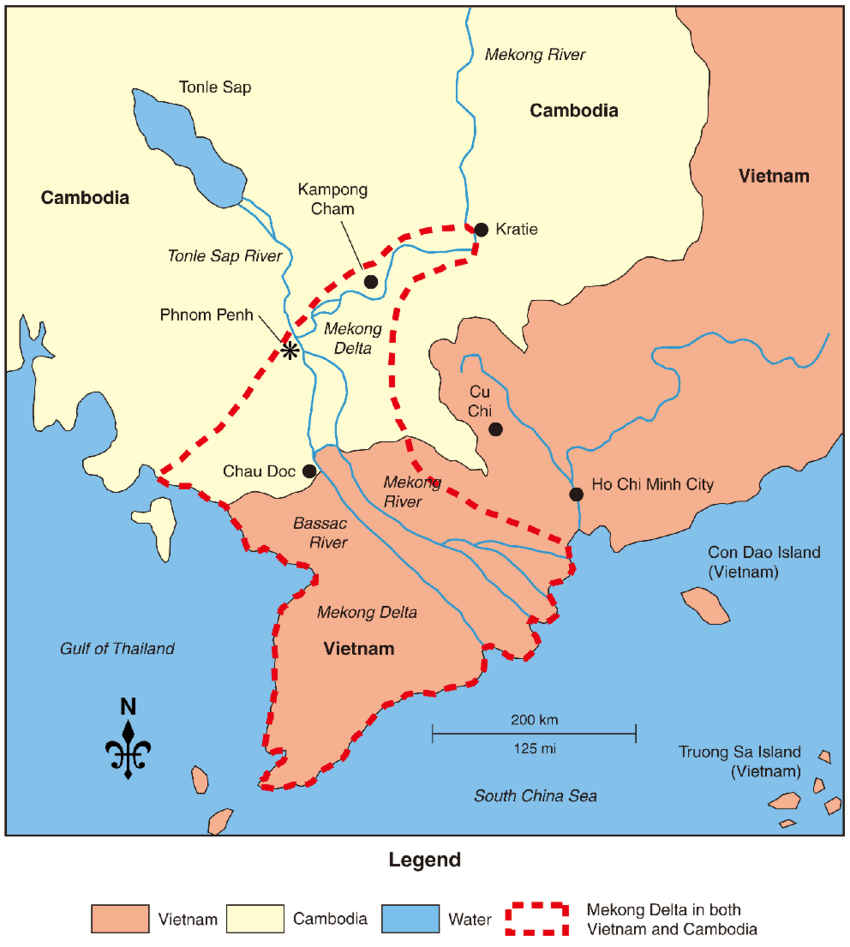
2. The Best Cities and Towns to Explore in the Mekong Delta
The Mekong Delta is not a single destination, but rather a mosaic of diverse towns and cities—each offering its own unique atmosphere, cultural heritage, and local experiences. Whether you’re seeking tranquil countryside, bustling floating markets, or cultural immersion, there’s a perfect spot waiting to be discovered. Here are some of the most captivating places to include in your Mekong Delta journey:
My Tho – Often considered the gateway to the Mekong Delta, My Tho is the closest Delta city to Ho Chi Minh City, making it an ideal first stop for travelers. It’s best known for its scenic boat tours that wind through peaceful canals and past lush islets, where visitors can experience traditional music performances, honey farms, and local coconut candy workshops.
Can Tho – As the largest and most developed city in the Delta, Can Tho serves as the region’s cultural and economic hub. It’s most famous for the Cai Rang floating market, where local vendors sell fresh produce directly from their boats in a vibrant display of river commerce. Can Tho also boasts a growing food scene, colonial architecture, and riverfront promenades.
Ben Tre – Dubbed the “Coconut Capital” of Vietnam, Ben Tre is known for its idyllic rural charm and abundance of coconut groves. Life moves at a slower pace here, and visitors can explore small villages by bicycle, take boat rides through narrow palm-lined canals, and learn about traditional coconut-based crafts and products.
Sa Dec – This picturesque town is famous for its ornamental flower gardens, which come alive in vibrant color during the Lunar New Year. Sa Dec also retains a strong French colonial influence, with charming villas, tree-lined streets, and historic landmarks such as the old house of Huynh Thuy Le — a central figure in the real-life love story behind Marguerite Duras’s novel The Lover.
Vinh Long & An Binh Island – Located at the heart of the Delta, Vinh Long and its nearby islet, An Binh Island, offer a peaceful escape into a world of lush fruit orchards, family-run homestays, and traditional handicrafts. Visitors can experience authentic rural life, from making puffed rice and rice paper to paddling through narrow canals flanked by dense vegetation.
Tra Vinh – With its strong Khmer heritage, Tra Vinh stands out as a spiritual and cultural center of the Mekong Delta. The province is dotted with beautifully ornate Khmer pagodas, and offers a deep dive into the traditions, language, and cuisine of Vietnam’s Khmer minority population.
Chau Doc – Situated near the Cambodian border, Chau Doc is a melting pot of Vietnamese, Khmer, and Cham cultures. It’s well known for its striking Tra Su Cajeput Forest, where visitors can glide through flooded forests teeming with birdlife. Chau Doc also serves as a convenient jumping-off point for river travel into Cambodia, including routes to Phnom Penh.
Whether you’re drawn to the Delta’s natural beauty, spiritual depth, or daily life along its waterways, these towns and cities each provide a distinct perspective on the region’s rich and multifaceted character.
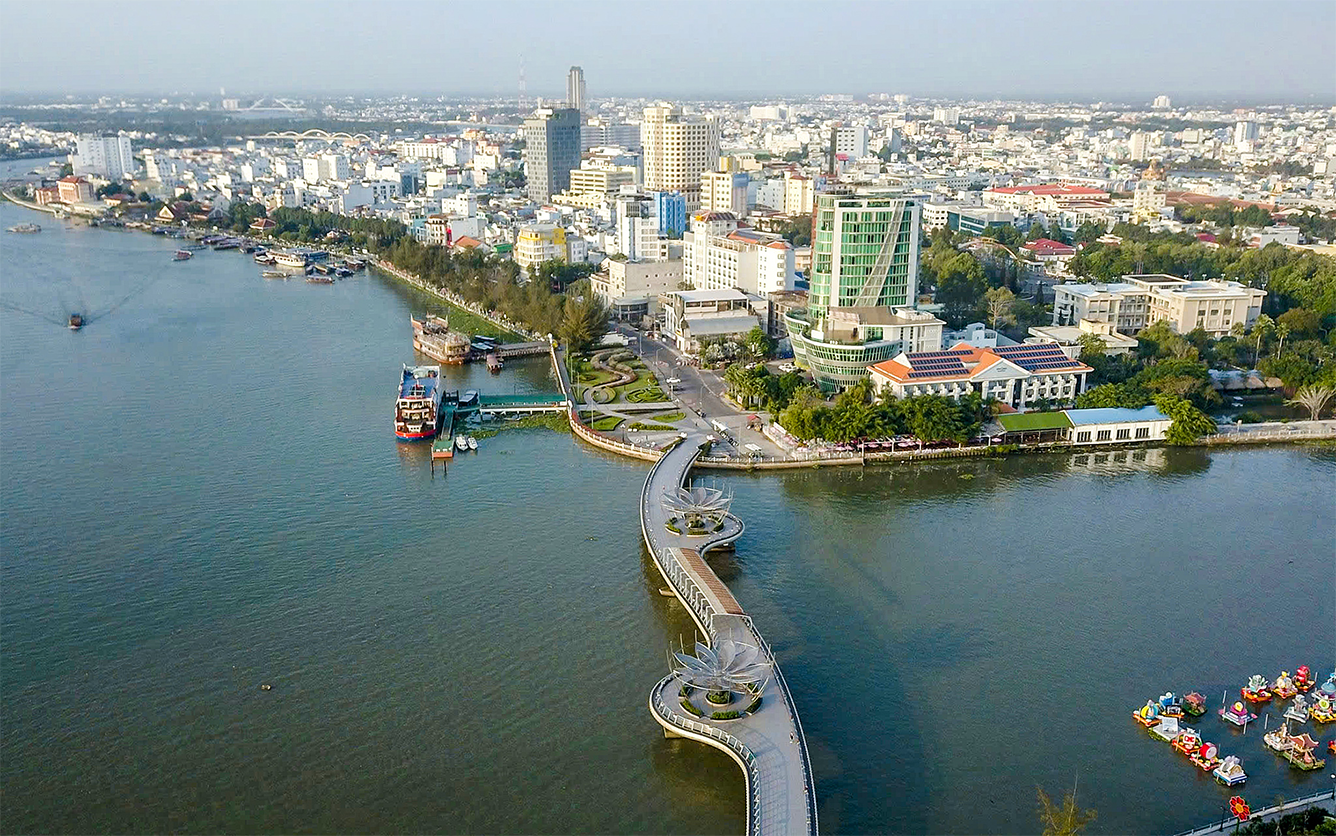
3. Top Things to Do in the Mekong Delta
The Mekong Delta is a sensory-rich destination, offering a deep connection to both nature and culture. Whether you’re an adventurer, foodie, or culture enthusiast, the Delta promises experiences that go beyond the ordinary. Here are some unforgettable activities to add to your itinerary:
🚲 Bicycle Through the Countryside
Pedal your way through endless stretches of lush rice paddies, bamboo-lined paths, and sleepy hamlets. As you cycle along dirt roads and canal banks, you’ll pass fruit-laden orchards, lotus ponds, and the occasional water buffalo. It’s one of the most intimate ways to connect with the landscape and interact with friendly locals in remote villages that see few tourists.
🛶 Glide Along Canals in a Rowboat
Hop into a traditional sampan and gently drift through narrow, shaded waterways lined with nipa palms. These quiet arroyos offer a tranquil escape from the outside world, revealing the rhythm of delta life—children waving from the banks, fishermen casting nets, and birds darting through the mangroves.
🚢 Take a River Cruise
For a more leisurely and luxurious experience, embark on a multi-day cruise along the Mekong River. These cruises offer comfortable cabins, gourmet meals, sunset cocktails on deck, and curated stops in charming towns and hidden villages. It’s an ideal way to absorb the delta’s beauty without sacrificing comfort.
🛍 Visit Floating Markets
Wake up early and witness one of the Delta’s most iconic sights: the floating markets of Cai Rang or Phong Dien. Here, boats packed with pineapples, dragon fruit, and fresh vegetables bob gently on the river, as local vendors shout out prices and trade goods from boat to boat. It’s a bustling, colorful, and authentic window into the region’s river-based economy.
🏺 Explore Local Craft Villages
Step into the heart of tradition by visiting artisan villages where local crafts are made by hand using time-honored methods. Watch weavers create sleeping mats from reeds, observe the delicate process of making coconut candy, or try your hand at shaping clay into pottery. These villages showcase the ingenuity and resourcefulness of Delta communities.
🛺 Ride a “Xe Lôi” (Motorized Tricycle)
Jump aboard this charming, open-air tricycle for a nostalgic ride through the countryside. Once a popular mode of transportation, the “xe lôi” takes you through narrow lanes, past rustic homes and lush gardens, offering a slow and scenic way to take in the surroundings.
🏠 Stay with a Local Family
For an authentic and memorable experience, book a homestay with a local family. You’ll share meals, learn how to cook traditional dishes, and perhaps even try your hand at fishing or farming. More than just accommodation, a homestay allows for genuine cultural exchange and a deeper understanding of daily life in the Delta.
🏛 Discover Colonial Architecture
Wander through towns like Sa Dec and Can Tho, where remnants of French colonial rule still stand. Visit the beautifully preserved Binh Thuy Ancient House or stroll past faded villas and old churches that blend Vietnamese and European styles. These architectural gems offer a glimpse into the region’s layered history.
🕌 Embrace the Cultural Melting Pot
The Mekong Delta is a rich tapestry of cultures and religions. In provinces like An Giang and Tra Vinh, you’ll find colorful Khmer pagodas, Cham Muslim mosques, Cao Dai temples, and ethnic minority festivals. Exploring this diversity reveals the Delta’s unique spirit of coexistence and its deep-rooted cultural complexity.
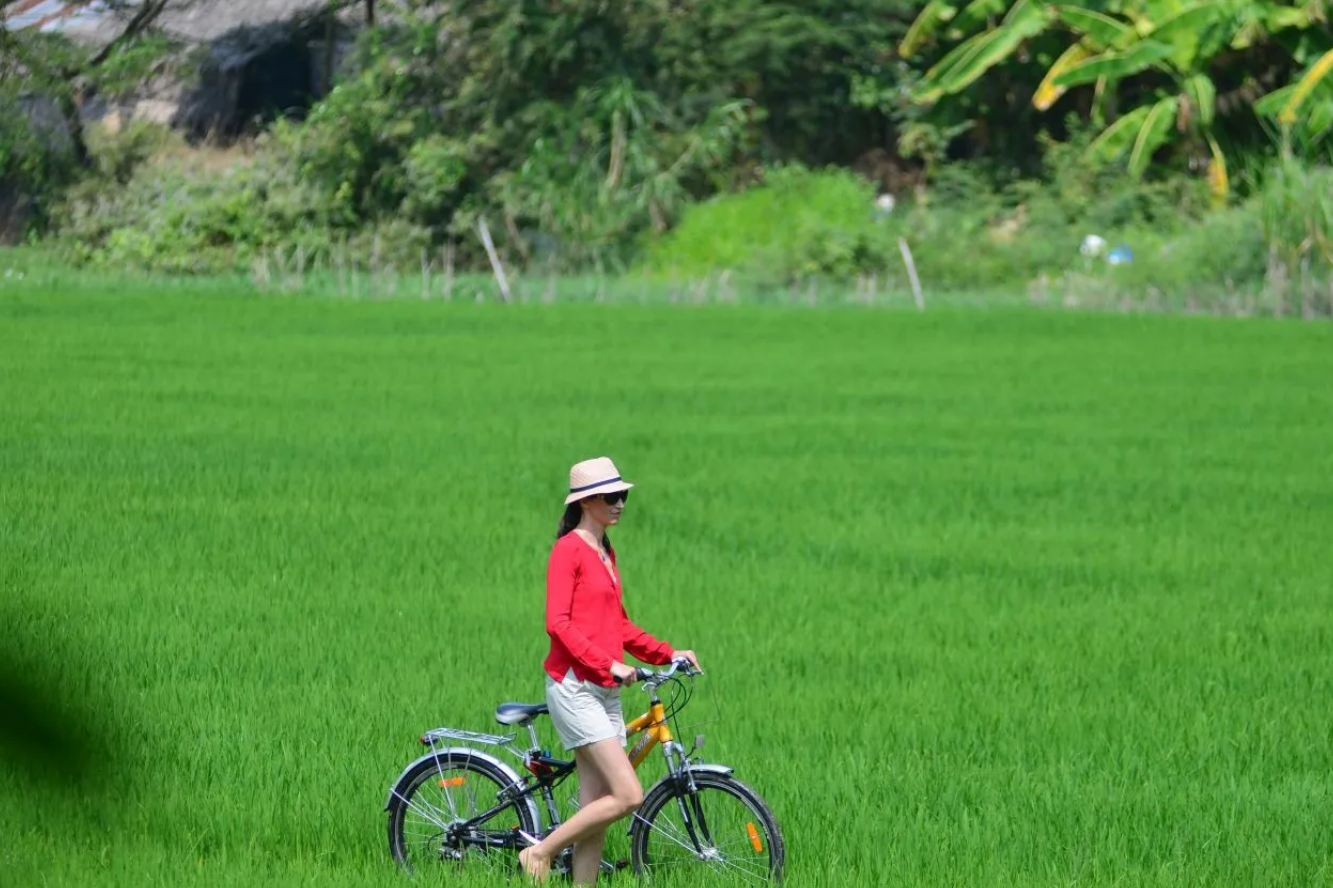
4. What to Eat in the Mekong Delta: A Taste of the South
Food in the Mekong Delta is a delightful reflection of the region’s fertile land, abundant waterways, and diverse cultural influences. The cuisine here is known for its balance of sweet, savory, and herbal flavors — often featuring generous amounts of sugar, coconut milk, fresh herbs, and river-caught ingredients. Whether you’re sampling street food at a riverside market or enjoying a home-cooked meal at a local homestay, the Delta’s culinary offerings are both comforting and deeply rooted in tradition. Here are some must-try dishes:
🥞 Bánh Xèo – These crispy, golden rice flour pancakes are a southern favorite. Stuffed with shrimp, pork, bean sprouts, and herbs, bánh xèo is typically served with rice paper and fresh greens for wrapping, then dipped in a sweet-and-sour fish sauce. The name means “sizzling cake,” a nod to the sound it makes when batter hits the hot pan.
🍜 Hủ Tiếu – This light yet flavorful noodle soup is a breakfast staple in the Delta. Variations abound, but it’s usually made with a pork-based broth and topped with shrimp, minced pork, and quail eggs. You’ll find it served both with broth (hủ tiếu nước) and dry with a side of broth (hủ tiếu khô), often garnished with garlic oil and crispy shallots.
🍲 Lẩu Mắm – A bold and aromatic hot pot made with fermented fish sauce (mắm), lẩu mắm is a love-it-or-hate-it dish—but one that’s deeply beloved in the region. It’s simmered with eggplant, lemongrass, and a variety of freshwater fish, shrimp, squid, and vegetables, then eaten with rice noodles. Its intense umami flavor makes it a uniquely southern delicacy.
🐟 Bún Cá – This refreshing fish noodle soup combines tender freshwater fish (often snakehead fish) with rice vermicelli and heaps of local herbs like banana blossom, water spinach, and Vietnamese coriander. The broth is light yet aromatic, often enhanced with tamarind for a slightly tangy finish.
🍍 Tropical Fruits Galore – Often referred to as the “fruit bowl of Vietnam,” the Mekong Delta is a paradise for fruit lovers. Sample freshly picked pomelos, longans, rambutan, star apples, dragon fruit, mangosteen, and jackfruit—many of which are available year-round thanks to the region’s tropical climate. Don’t miss trying milk fruit (vú sữa) and durian, the infamous “king of fruits.”
🦀 Lẩu Cua Đồng – A rustic and hearty hot pot made with field crab, this dish is a countryside classic. The broth is rich and savory, often cooked with tomatoes, tofu, mushrooms, and taro stem. It’s typically enjoyed with fresh greens, rice vermicelli, and a spicy dipping sauce.
🎋 Bánh Tét – Traditionally eaten during Tết (Lunar New Year), bánh tét is a sticky rice cake wrapped in banana leaves and filled with mung beans, pork belly, or sometimes sweet fillings like banana. It’s boiled for hours and sliced into rounds, symbolizing prosperity and unity. Though it’s associated with holidays, you can often find it year-round in local markets.
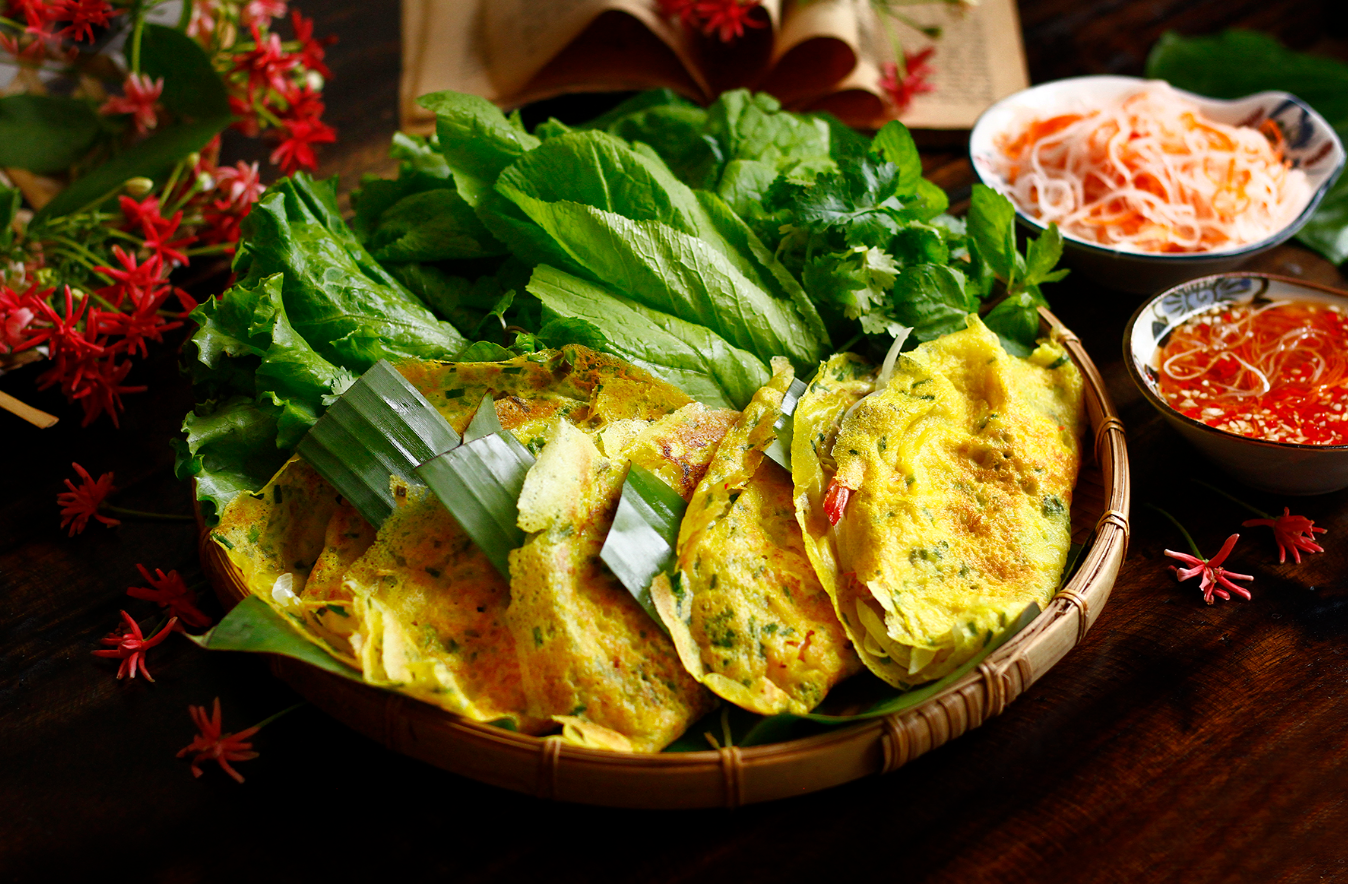
5. When Is the Best Time to Visit the Mekong Delta?
Thanks to its tropical monsoon climate, the Mekong Delta is a year-round destination—but your experience can vary depending on the season. The region sees two distinct periods: the dry season and the rainy (or wet) season, each offering its own unique charm and opportunities for exploration.
☀️ Dry Season (November to April):
This is considered the best time to visit, especially for first-time travelers. The weather is pleasantly warm and relatively dry, with sunny days and lower humidity—perfect for outdoor activities like cycling through rice paddies, taking sampan rides through the canals, or exploring floating markets without concern for sudden downpours. River levels are stable, making boat travel smooth and reliable, and many festivals also occur during this season, adding vibrant cultural experiences to your trip.
🌧️ Rainy Season (May to October):
Don’t let the word “rainy” scare you off—this is a magical time in the Mekong Delta, especially for nature lovers and photographers. Brief, heavy showers are common in the afternoon, but they typically don’t last long. In return, the landscape transforms into a lush, emerald paradise. Waterways swell, rice fields glow with new life, and the skies often put on dramatic displays with towering clouds and golden post-rain light. This season is also when floating markets are at their liveliest, and when tropical fruits are at their peak.
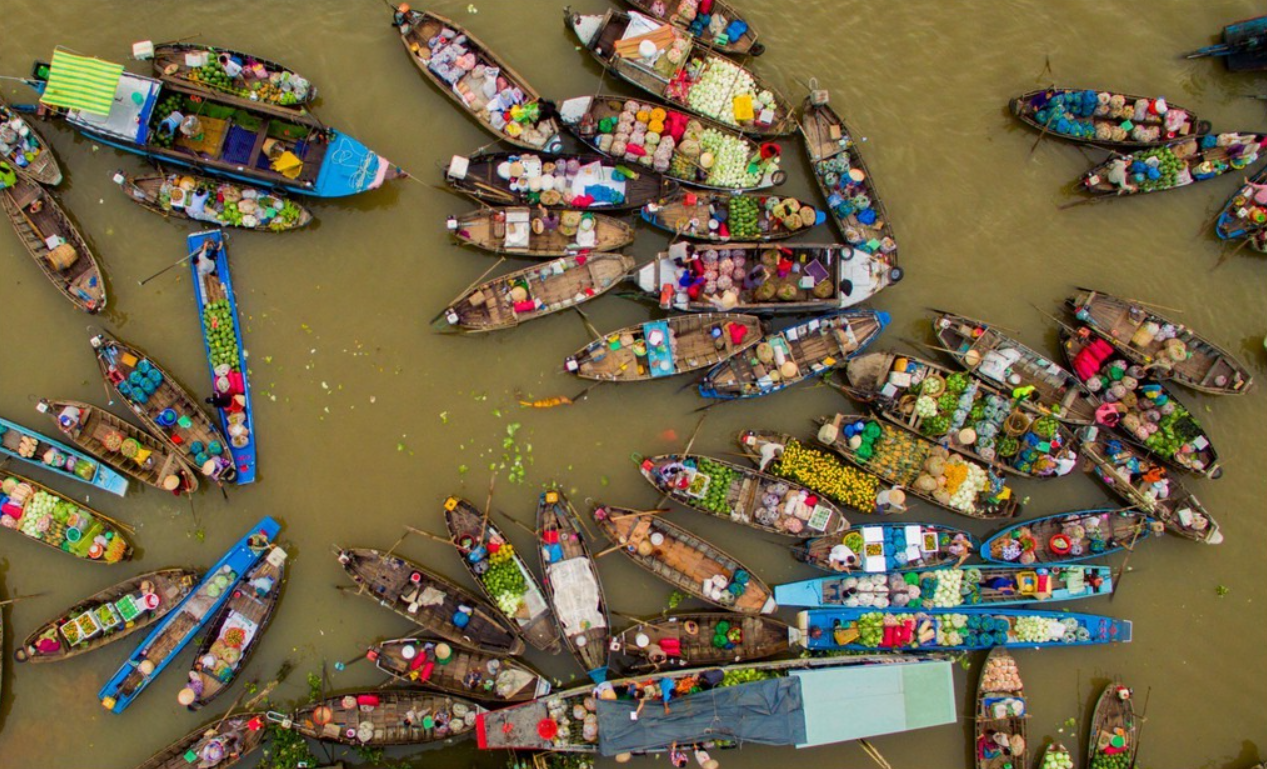
6. How to Get to the Mekong Delta
Reaching the Mekong Delta is relatively easy, especially from southern Vietnam. Whether you’re planning a quick day trip or a deeper exploration across multiple provinces, there are several convenient travel options to suit your schedule and comfort level.
🚍 From Ho Chi Minh City:
As the closest major city to the Mekong Delta, Ho Chi Minh City serves as the primary gateway for most travelers. The easiest and most affordable way to reach the Delta is by bus—daily departures run from Mien Tay Bus Station to cities like My Tho, Ben Tre, Can Tho, and Vinh Long. The journey typically takes 2 to 4 hours, depending on your destination. For a more comfortable and hassle-free experience, you can book a private transfer or guided tour, which often includes hotel pickup, boat rides, meals, and local guides who can enrich your experience with cultural insights.
✈️ From Other Vietnamese Cities:
If you’re coming from further afield—such as Hanoi, Da Nang, or Hue—the fastest way to reach the heart of the Delta is by air. Can Tho International Airport is the main airport in the region and receives several domestic flights daily. From Can Tho, you can easily travel onward to nearby towns and attractions via car or bus, or begin a multi-day Mekong River cruise.
🚤 To Cambodia via Chau Doc:
If you’re planning to continue your journey into Cambodia, Chau Doc is your ideal starting point. This riverside town near the border offers scenic speedboat services to Phnom Penh, cruising up the Mekong River past floating villages, wetlands, and border checkpoints. The trip takes around 5 to 6 hours and offers a relaxing, immersive way to cross between Vietnam and Cambodia while soaking in the riverine scenery.
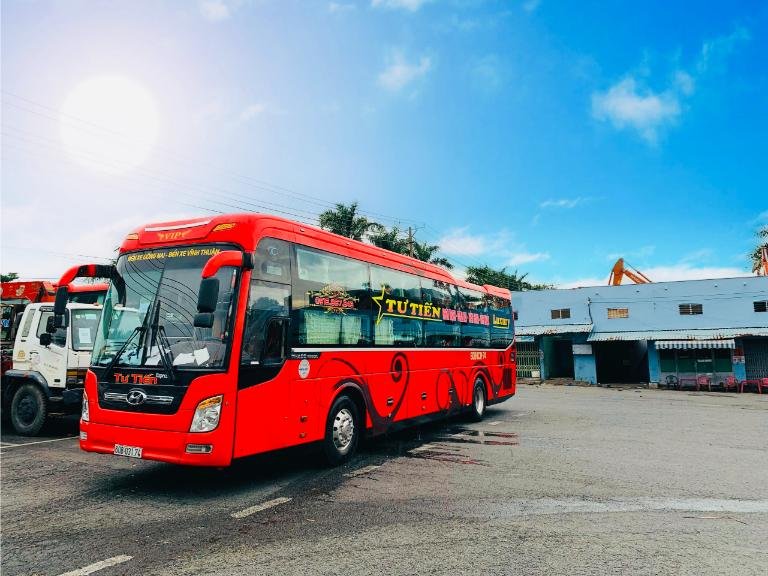
7. Surprising Facts About the Mekong Delta
Beyond its lush landscapes and tranquil waterways, the Mekong Delta holds many fascinating secrets. From its epic geographic journey to its vibrant traditions, this region is layered with natural wonders, cultural richness, and age-old ways of life. Here are some captivating facts that may surprise you:
🌏 The Mekong River’s Origins Are Far Away
The Mekong River begins its long and mighty journey high on the Tibetan Plateau, winding through six countries—China, Myanmar, Laos, Thailand, Cambodia, and finally Vietnam—before emptying into the East Sea. Stretching over 4,350 kilometers, it’s one of the longest rivers in the world and serves as a vital artery for life, trade, and agriculture across Southeast Asia.
🐉 Why It’s Called the “Nine Dragons” River
In Vietnamese, the Mekong is often referred to as “Cửu Long,” which means “Nine Dragons.” This poetic name comes from the river’s dramatic split into nine distributaries as it reaches the Delta, symbolizing nine powerful dragons descending to bring prosperity to the land. Though today some of these branches have merged, the legend and symbolism remain a proud part of local identity.
🚤 Boats Are a Way of Life
In the rural Mekong Delta, boats are more than just transportation—they’re lifelines. People use sampans and ferries to commute, deliver goods, fish, or even sell produce at floating markets. While scooters buzz through the towns and cities, waterways remain the beating heart of everyday life in the countryside.
🏫 Floating Schools and Stilt Homes
The Delta’s residents have adapted ingeniously to their watery surroundings. In flood-prone villages, homes, schools, and shops are often built on stilts or even floating platforms to stay above rising waters. This floating lifestyle showcases the deep interdependence between people and river in this region.
🌧️ Flood Season Is a Blessing in Disguise
From late July to November, seasonal floods sweep through much of the Delta. Far from being a disaster, these floods are essential to the ecosystem—replenishing the soil with nutrients, supporting rice cultivation, and attracting fish and other aquatic life. Locals often refer to it as the “water season” and celebrate its arrival.
🍍 The Delta Is Vietnam’s Fruit Capital
Thanks to its year-round warmth, rich soil, and abundant water, the Mekong Delta is a tropical fruit paradise. Farmers here grow a dazzling variety of fruits, from pomelos and star apples to longans, rambutans, and mangosteens. Many villages are centered around fruit farming, and seasonal harvests often turn into colorful local festivals.
👚 Traditional Clothing: The “Áo Bà Ba”
The áo bà ba is a traditional, everyday outfit worn by many locals in the Delta. Simple, elegant, and practical, this two-piece garment—usually made of lightweight cotton—consists of a long-sleeved top and loose trousers. It’s ideal for the region’s climate and reflects the humble, hardworking spirit of the Delta people.
🎶 A UNESCO-Recognized Musical Heritage
The Mekong Delta is the birthplace of Đờn ca tài tử, a traditional music genre blending southern folk melodies with classical court music. Performed with stringed instruments like the đàn tranh and đàn kìm, these soulful songs are often played at festivals, family gatherings, and on riverboats. In 2013, Đờn ca tài tử was recognized by UNESCO as an Intangible Cultural Heritage of Humanity—a testament to the Delta’s deep artistic legacy.
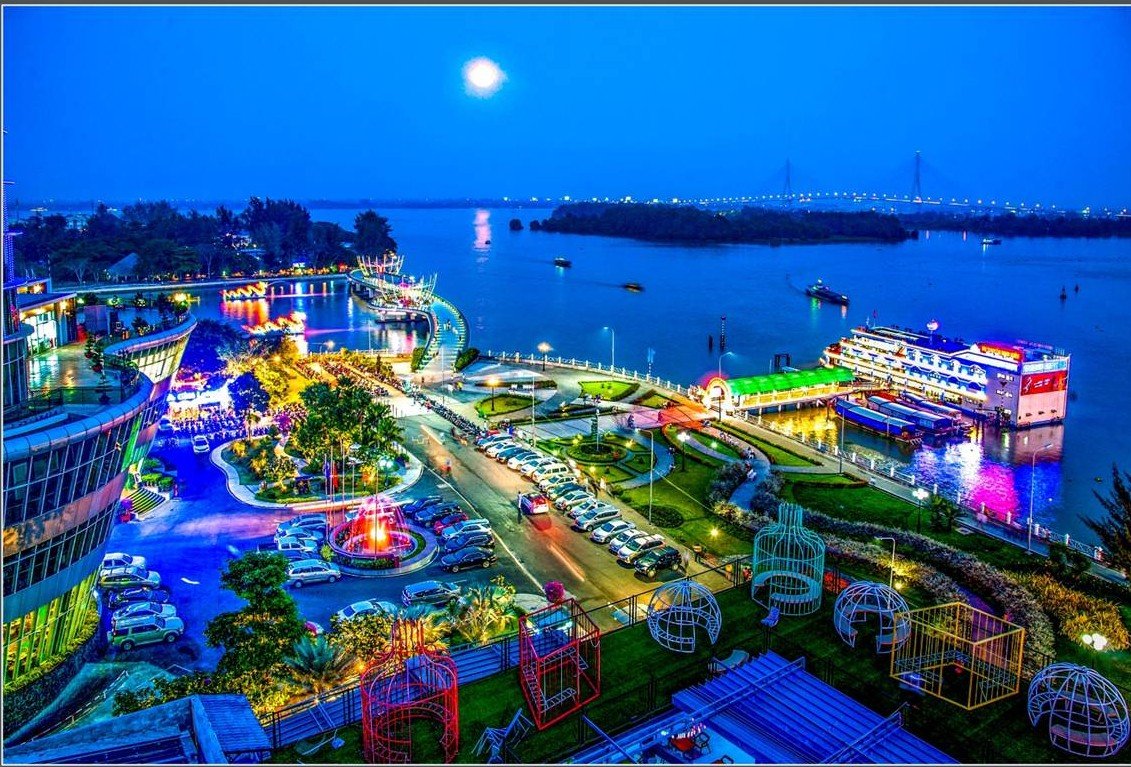
Final Thoughts
The Mekong Delta is much more than a scenic detour—it’s a living, breathing tapestry of culture, cuisine, and community. Whether you’re interested in floating markets, rural landscapes, or authentic local encounters, this region promises a soulful travel experience.
Located just a short trip from Ho Chi Minh City, it’s easy to visit—but hard to forget. For a quick taste, one day may suffice. For a richer, slower journey, stay 3–5 days. And if you’re ready for something truly immersive, plan a full week.
Need help creating your perfect Mekong Delta itinerary? Reach out today—we’re here to guide your adventure every step of the way.

